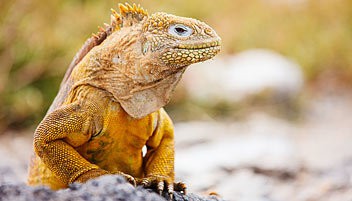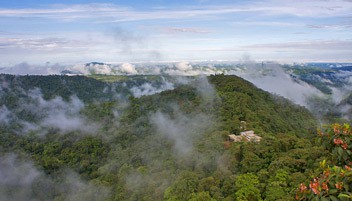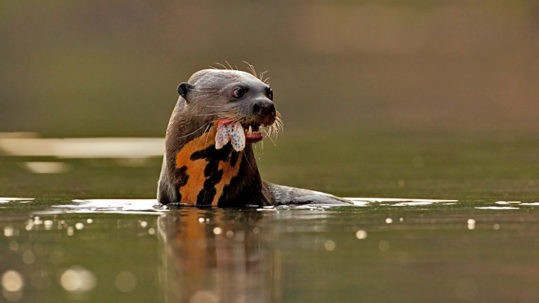28 Aug Genovesa Island, Galapagos – A Birders Paradise
Genovesa Island, Galapgos – A Birders Paradise
Fiona Black – South America Travel Centre
I have never considered myself a bird-watcher and to be honest I was never very interested in birds, that is until my recent visit to Genovesa Island, Galapagos. Here I couldn’t help but be awestruck by the size, colour, variety and sheer volume of the birds that make Genovesa their home.
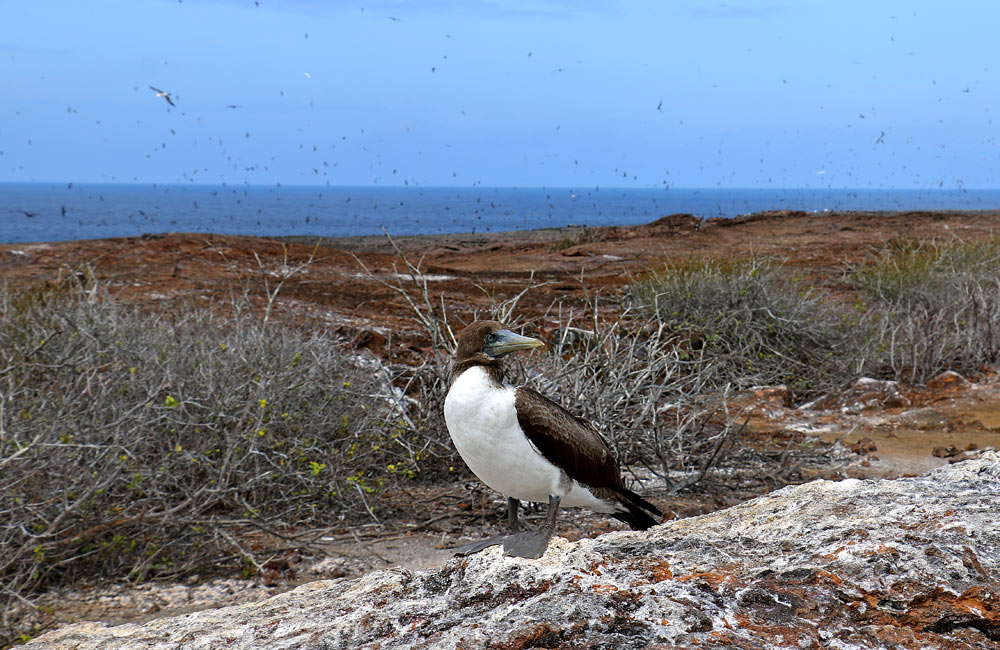
Genovesa Island is a shield volcano in the Galapagos archipelago, in which part of the caldera wall has collapsed creating the Great Darwin Bay. This island is in the north of the Galapagos archipelago and is famous for the abundance of birdlife.
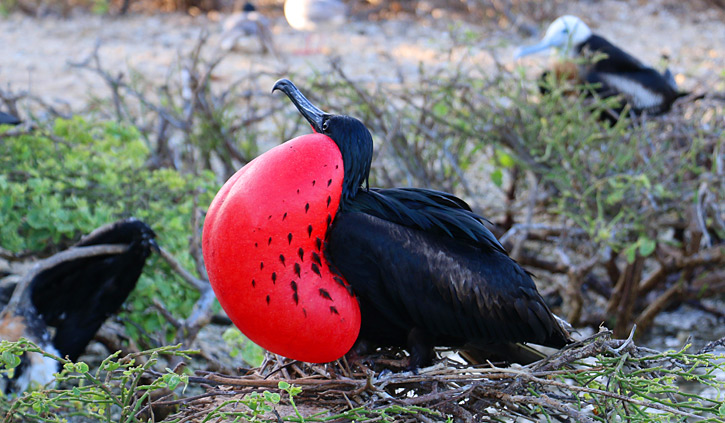
Prince Phillip’s Steps
My day on this remarkable island started out with a Zodiac (or Panga as they are locally known) from my ship, the Santa Cruz II, to Prince Phillip’s Steps. From the zodiac I clambered up the 25 metre high staircase cut into the cliff face.
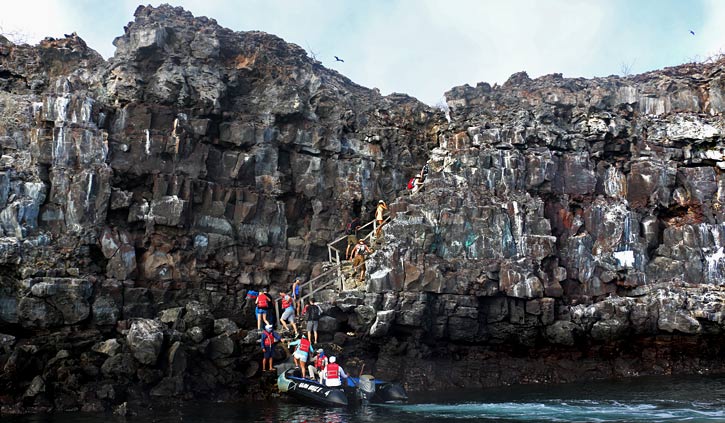
At the top when I finally looked up I was surrounded by what at first looked like big red balloons. They were in fact the throat pouches of male frigate-birds which is only inflated during courtship. Well let me tell you, the courtship process was in full swing on Genovesa Island. Not only do the frigate-birds inflate their neck pouches but they stretch out their wings and sing an unusual honking song; apparently the females are impressed by this.
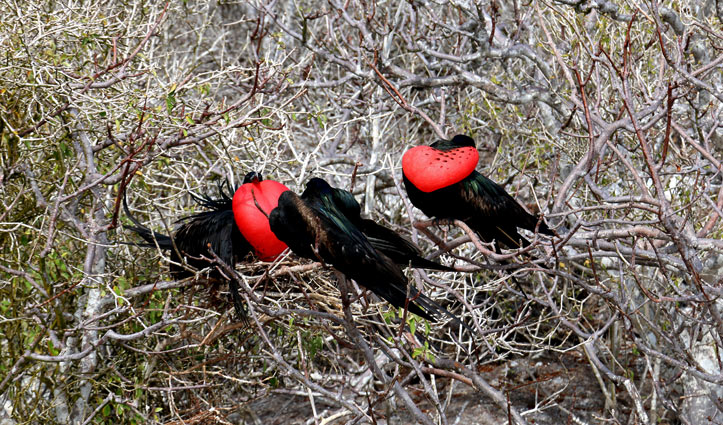
I walked with my group and naturalist guide along a designated path through the Palo Santo trees. The leafless trees with white twisted branches created a stark contrast to the colours of the birds and chicks nesting in and around them. Red footed boobies curiously watched us walk past as the frigate birds carried on with their courtship. We had to watch our step as many Nazca booby chicks had wandered onto the path.
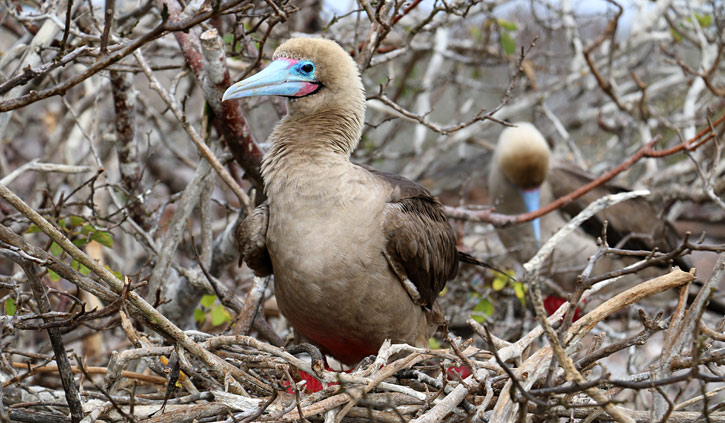
Blue Footed Boobie
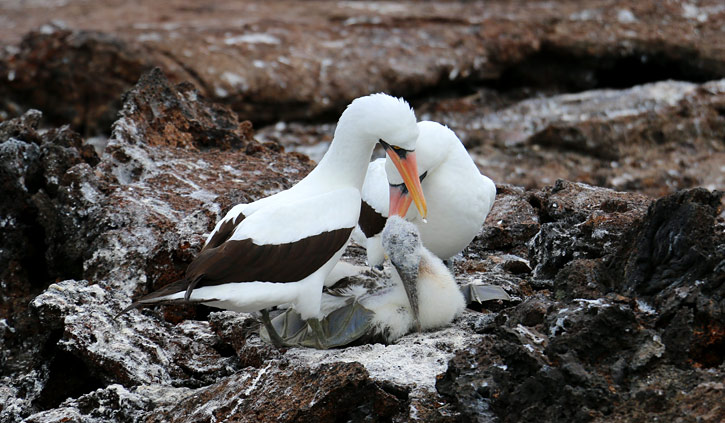
Nazca Boobies
At the edge of the forest we came to a rocky lava plain. Standing on the rocks and looking out to sea my vision was filled with what must have been thousands of birds flying, swooping and diving for fish. It looked like a swarm of giant insects but in actual fact were storm petrels!
As we continued along the trail our guide spotted a Galapagos short-eared owl in the crevasse between the rocks. She explained that this sub-species of owl is endemic to the Galapagos and it feeds almost entirely on the storm petrels that breed here in there tens of thousands. She added that unlike most owls the Galapagos short-eared owls hunts during the day.
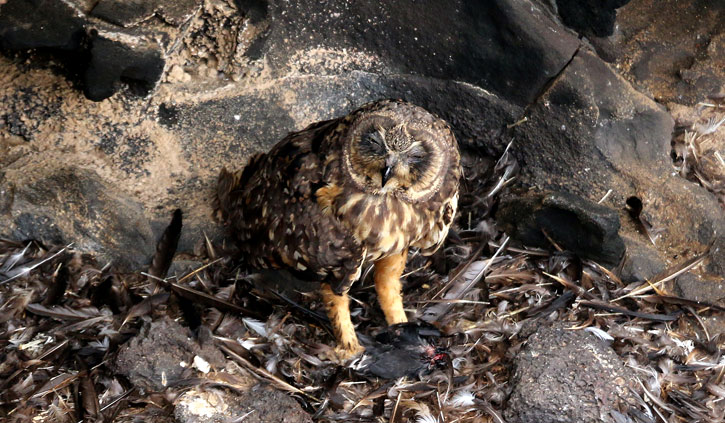
Darwin Beach
The wildlife extravaganza continued into the afternoon as we spent the rest of the day snorkelling at Darwin Beach Sea lions lazed on the white sand as their energetic pups played in the nearby rock pools. The highlight of this snorkelling excursion was the Galapagos sharks swimming below which we watched in awe from a safe distance.
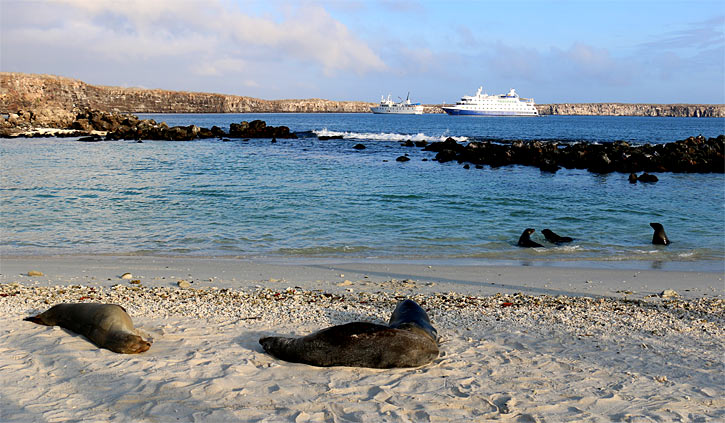
In a nearby lagoon at the end of the beach we saw more great frigatebirds and red-footed boobies along with lava gulls, Galapagos mockingbirds, yellow-crowned herons, and lava herons. Other birds found on the island include: Galapagos doves, red-billed tropic birds and swallow-tailed gulls. As we left the beach to return to our ship we could see many of the great frigatebirds stretching out their wings as if they were waving us goodbye. This truly was a remarkable place and I highly recommend including Genovesa Island to your Galapagos itinerary. I arrived with little interest in birds and left with a new found fascination.
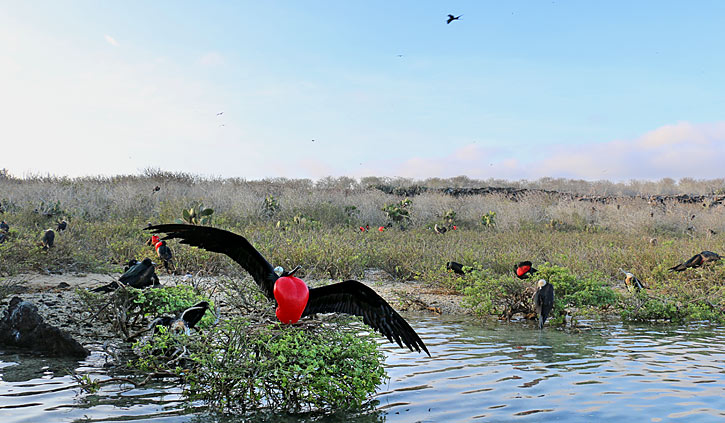
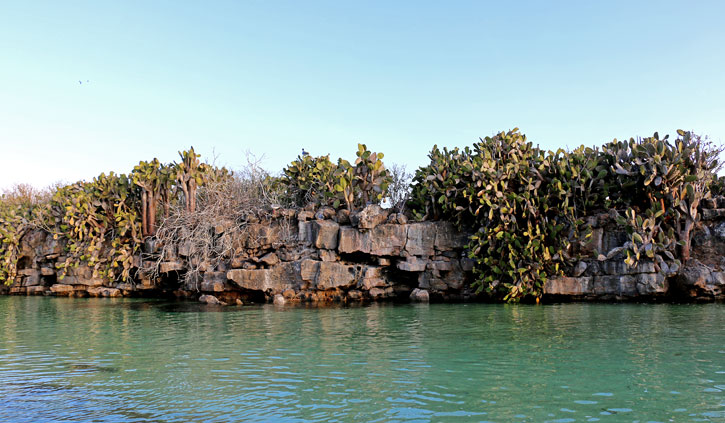
Santa Cruz II
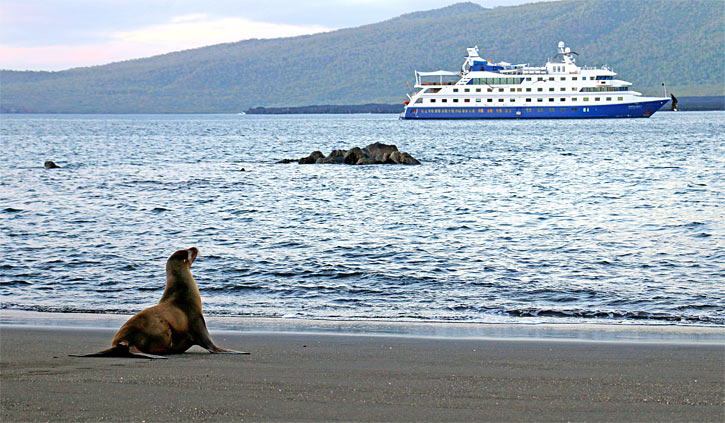
To get to Genovesa Island I travelled on the Santa Cruz II. A superior class expedition cruise ship. I joined a 5 day, 4 night, Northern itinerary which enabled me to spend the whole day on Genovesa.
The Santa Cruz II underwent a complete renovation in 2015 and is modern and comfortable. She is 71.8 metres long and, with 50 spacious air-conditioned cabins located across three decks. This ship can provide families and groups of friends a wide range of cabin styles and sizes from which to choose.
The communal areas include a dining room, lounge, bar and sun deck; they are all excellent places to relax and enjoy the company of the other guests. The ship has 2 Jacuzzi’s, as well as an observation platform, that is ideal for dolphin-spotting. Guests also have access to the bridge where they can view state of the art navigation equipment run by the experienced captain.
For ease of getting to shore and for wildlife viewing along the coast line Zodiacs are used as well as a boat with a glass bottom to view the underwater wildlife. Sea kayaking and snorkelling are also available.
Capacity: 90 Guests
Cruise Durations: 5 and 7 day itineraries
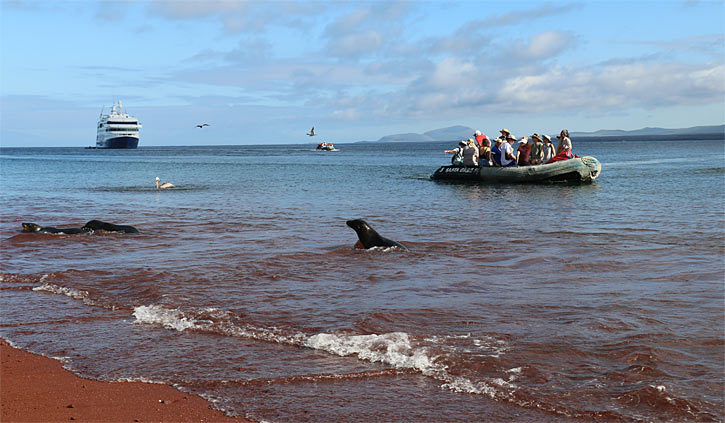
Read more about travelling in Ecuador
-
06Oct
Galapagos Islands – The Big 15
The ‘BIG 15’ has been released, a list of the most iconic wildlife of the Galapagos Islands chosen by consensus among top naturalist guides and dedicated wildlife enthusiasts, and you’ll encounter many of these amazing creatures on cruises of 5 nights or longer...
-
14Oct
Mashpi Biodiversity Reserve, Ecuador
The Mashpi Biodiversity Reserve in Ecuador is a part of one of the greatest biodiversity ‘hot spots’ on earth, an uninterrupted rainforest that ecologists call the Chocó-Darién region which once stretched north to south, from Panama all the way to Ecuador, compressed between the Pacific coast and the Andes mountains....
-
22Mar
The Lobo De Rio (Wolf of the River – Giant Otter)
Twenty years ago the Añangu Kichwa Community in Ecuador collectively gave up subsistence hunting and fishing (their legal right) to allow local wildlife populations to recover, and it appears to be working. ...


